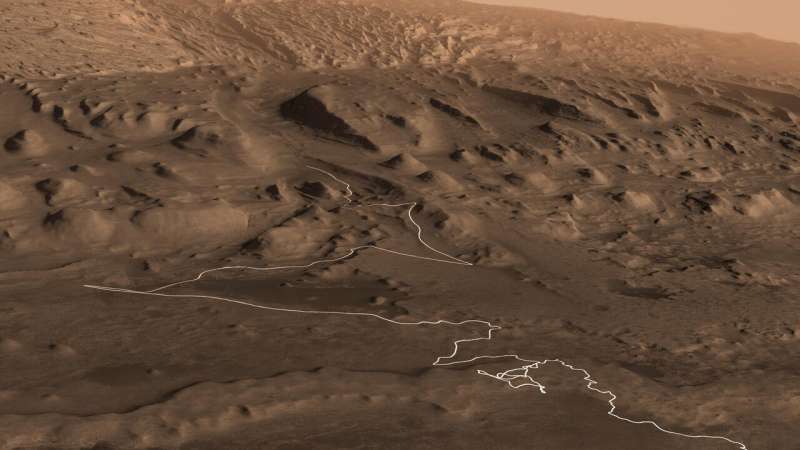This animation shows a proposed route for NASA's Curiosity rover, which is climbing lower Mount Sharp on Mars. The annotated version of the map labels different regions that scientists working with the rover would like to explore in coming years. Credit: NASA/JPL-Caltech/ESA/University of Arizona/JHUAPL/MSSS/USGS Astrogeology Science Center
Ever wanted to visit Mars? A new animated video shows what it would be like to soar over Mount Sharp, which NASA's Curiosity rover has been climbing since 2014.
This video highlights several regions on the mountain that are intriguing to Curiosity's scientists, chief among them what the science team calls the "clay-bearing unit," where Curiosity has just started analyzing rock samples. The aerial tour also shows the roving science lab's proposed path in the years to come. Intriguing targets include the rocky cliffs of the "sulfate-bearing unit," where sulfate minerals may indicate the area was drying up or becoming more acidic in ancient times, and Gediz Vallis, where a river may have carved a path through the sulfate unit.
Each region represents a different period in the history of Mount Sharp, which rises about 3 miles (5 kilometers) from the base of Gale Crater. Curiosity's scientists want to visit these places to learn more about the history of water on the mountain, which slowly dried up as the climate changed.
Understanding how these changes occurred on Mount Sharp may provide new insights into why water - one of the most critical resources for life - disappeared from Mars billions of years ago.
NASA plans to land astronauts on the Moon by 2024 as a step toward human exploration of Mars. The technologies that will be developed for the Moon will make future robotic and human missions to Mars possible.
Provided by Jet Propulsion Laboratory
























